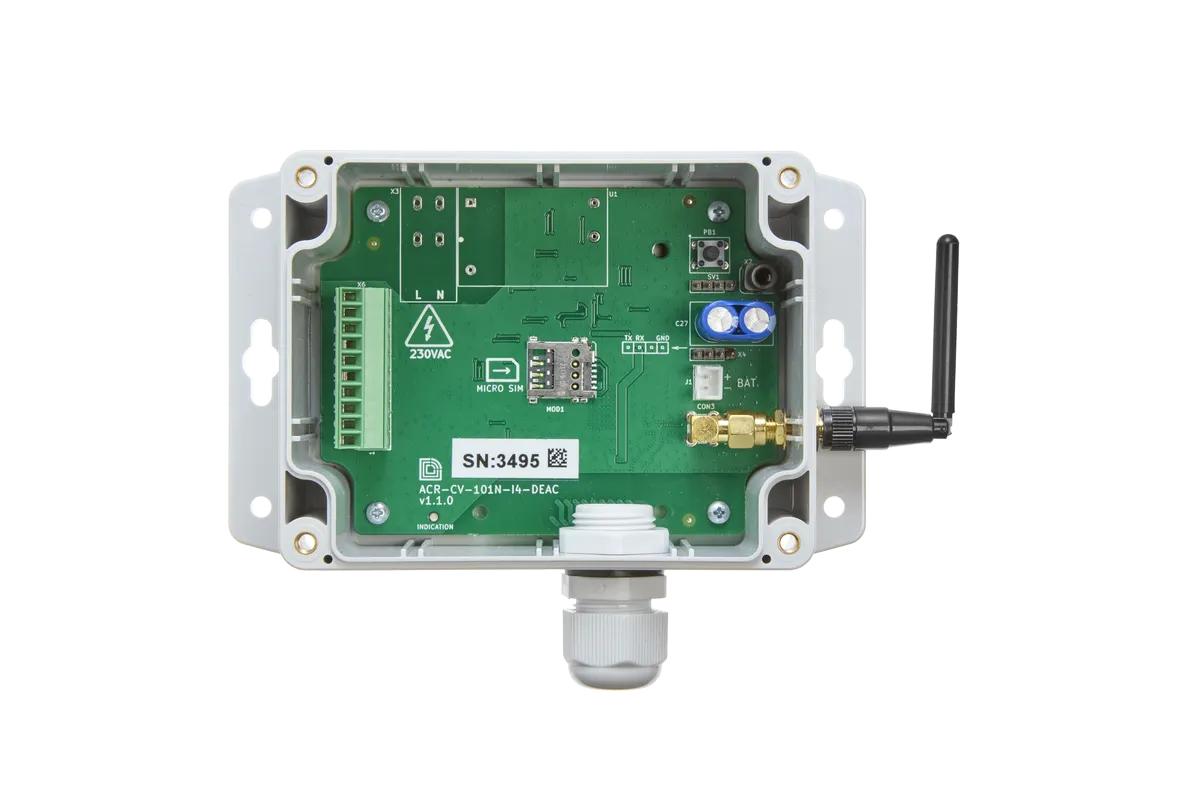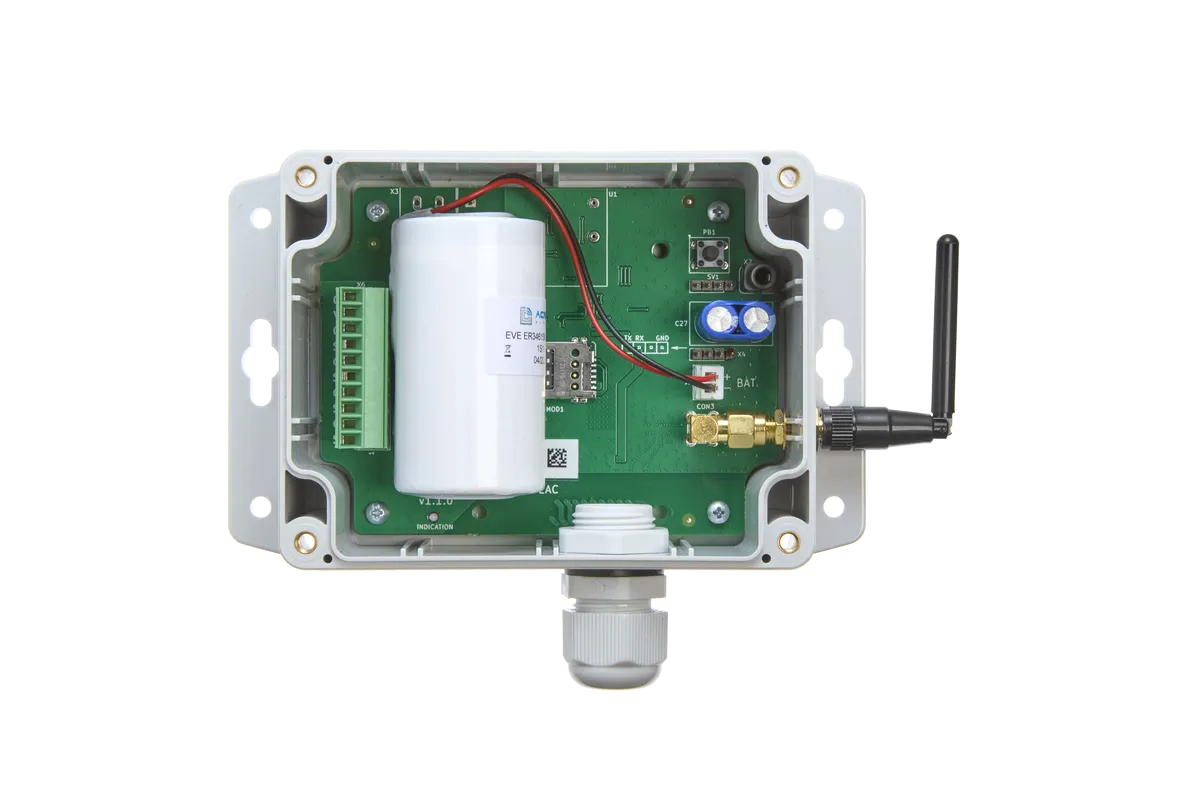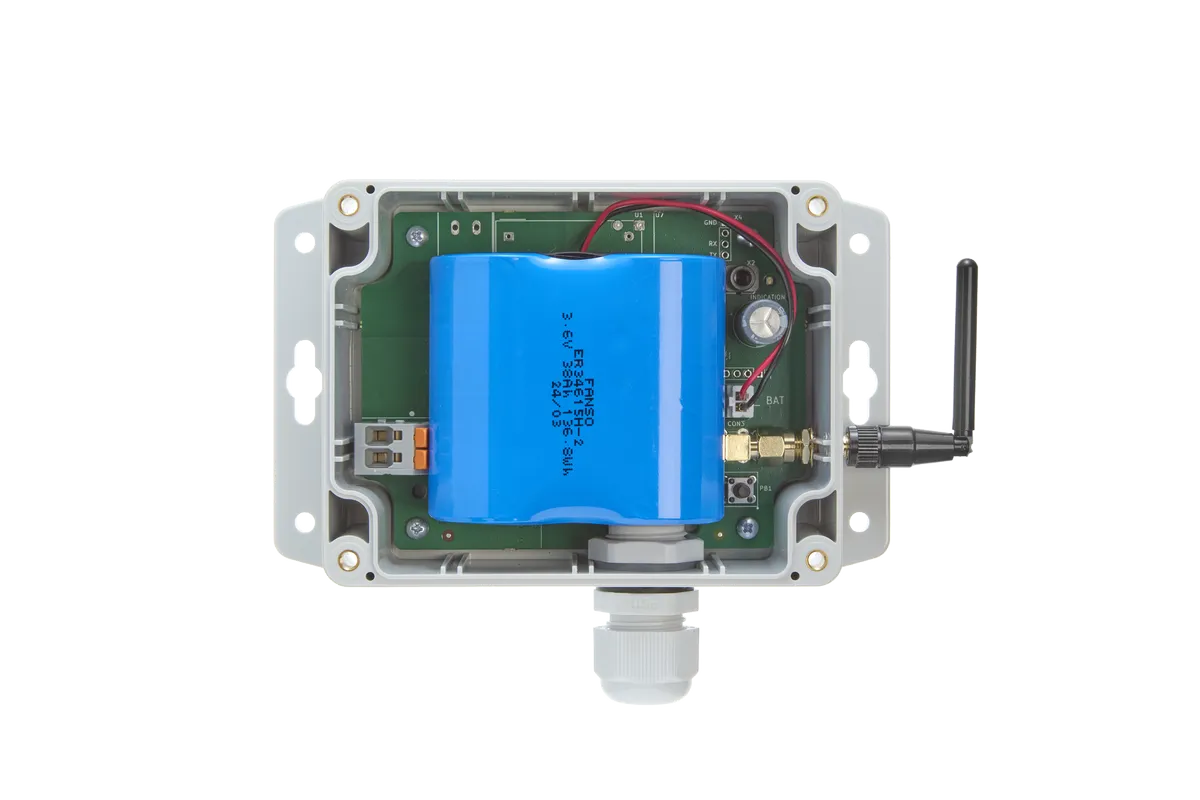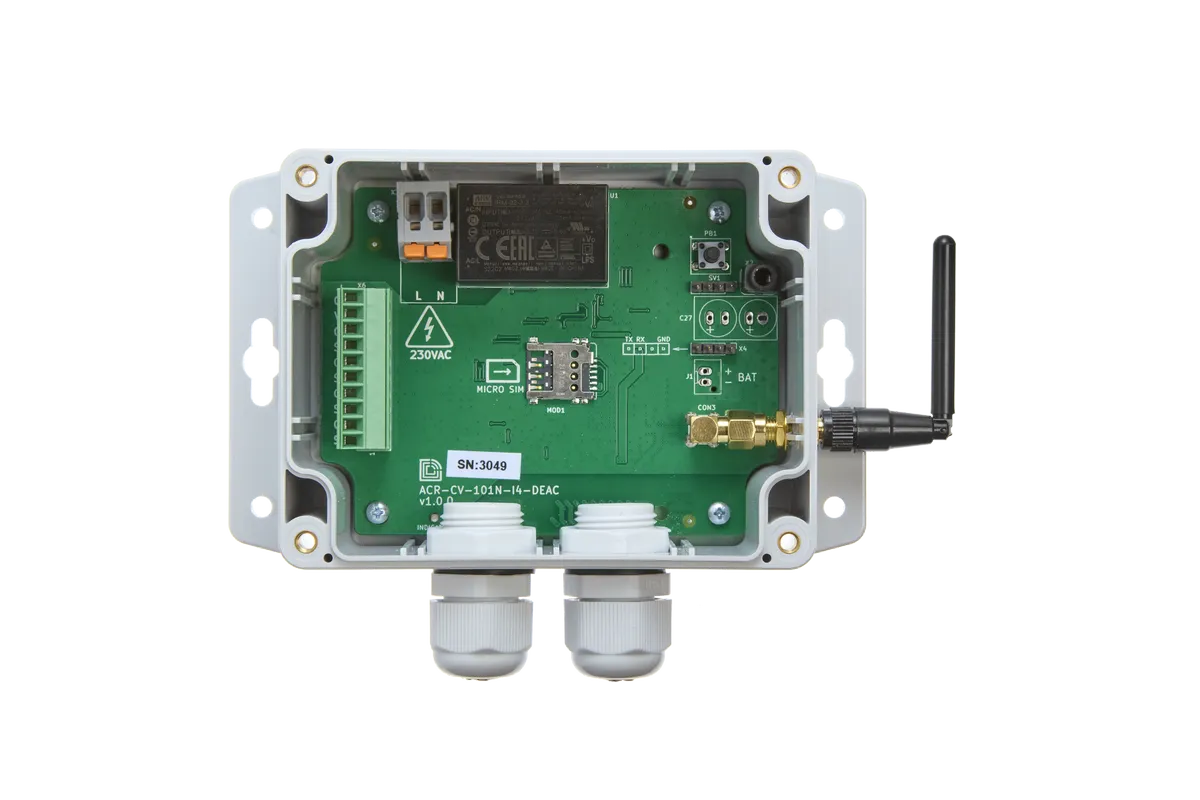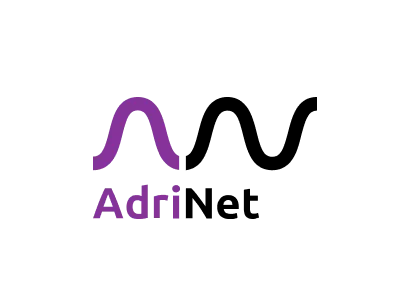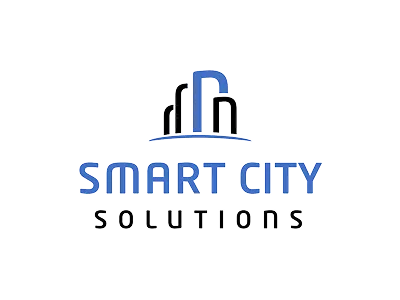Pulse Input S0 to NB‑IoT
Our converter with four S0 inputs to NB-IoT is designed for readings from devices with a pulse output – such as electricity meters, water meters and other measurement devices. It enables the integration of traditional S0 meters into the NB-IoT wireless network, facilitating data collection and analysis at the user-defined intervals.
With the option of local configuration via cable and remote configuration over the network, our device significantly reduces the total cost of ownership in projects that require frequent remote readings of the S0 meters.

Choose ACRIOS Systems converters. Here’s why

We have a full control over each part of the code in our devices. The hardware we produce can be maintained even many years after installation.

Our converters are manufactured in the Czech Republic with Czech subcontractors. Each unit undergoes final testing while focusing on the functionality of individual communication interfaces and device power consumption.

We pay close attention to the TCO - from using a coulomb counter to obtain an accurate battery life to the pre-configured units delivery with your settings.

The device stores the pulse count and always sends the last 3 values in case of a network outage. Users can also set threshold alarm values, where a message is sent immediately regardless of the set reading interval to detect the sudden measurement anomalies.

For all the NB-IoT devices, we can perform the remote firmware updates via the NB-IoT network. This means you don't need to make any changes to the installation.

We prioritize privacy and data security—use your own SIM cards and keep sensitive data to yourself. Our part of the puzzle is the hardware and we’re happy to assist with everything else.

Good technical documentation is the foundation of quick integration. On our Wiki, you'll find integration manuals, communication protocol descriptions and videos explaining the usage.
Technical specifications

- Options for the DI input, S0 input or the current loop
- Readings with up to 15-minute intervals
- Capability of the continuous sampling and sending specific messages based on the signal pattern—typically within the ETCS (European Train Control System) pulse pattern detection
- Support for meters using two tariffs
- User-configurable alarm threshold values. If any threshold is exceeded, the sensor immediately sends data to the platform
- Battery-powered or externally powered versions
- NB-IoT communication with the ability to use any NB-IoT SIM card
- Default plug & play configuration
- Remote configuration capability via the NB-IoT network
- User-replaceable battery in battery-powered versions
- SMA standard antenna connector
- Dimensions: 145 x 90 x 55 mm
- Weight: 336 g with battery
- IP Rating: IP67
- Transmitter Power Supply: D-Cell battery 19,000 mAh, 2x D-Cell batteries 38,000 mAh, or external power supply 85-305V AC
- Input Parameters: Minimum pulse length: 30 ms, Maximuminput voltage: 24V, Maximum sampling frequency: 33Hz, Open contact resistance:> 200MOhm, Closed contact resistance: <100kOhm, ESD: 16kV
- Maximum Number of Devices: 4
- Features: Time synchronization from the network, local history of the unsent frames, pulsepattern detection, detection of 2 metertariffs
- NB-IoT: 3GPP rel. v.14
- AUX External Power Supply Option: 3.3V DC
- Kamstrup Multical 21
- Diehl Metering Aquarious 120
- Schneider Electric iEM3000 Series
- Landis+Gyr E550
- Elster BK-G4
- Itron Gallus 2000
- Kamstrup Multical 602
- Siemens WFM401
- Endress+Hauser Proline Promag 50
- KROHNE OPTIFLUX 4300
- Siemens Trainguard 200
- Alstom Atlas 200
- Thales ETCS L1
- Bombardier Interflo 450
- Ansaldo STS (Hitachi Rail) ERTMS L1
- Sensus iPERL
- Arad Group Octave
- Badger Meter E-Series
- ABB A41 Series
- GE kV2c
- Eaton IQ 250/260
- Honeywell Elster American Meter AL-800
- Sensus Sonix 2000
- Schlumberger ACD G10
- Landis+Gyr Ultraheat T230
- Danfoss SonoSelect 10
- Sensus PolluStat
- Siemens SITRANS F M MAG 8000
- Yokogawa ADMAG AXF
- ABB ProcessMaster 300
- CAF AURIGA ETCS
- Siemens Eurobalise
- Alstom Euroloop
- ACR-CV-101N-I4-D / Pulse input to NB-IoT, battery powered
- ACR-CV-101N-I4-D2 / Pulse input to NB-IoT, 2xD-cell battery powered
- ACR-CV-101N-4-EAC* / Pulse input to NB-IoT, externally powered
*Under MOQ
- 1x 4CH pulse input to NB-IoT converter
- 1x Installation manual
- 1x Battery (for battery powered units)
- 1x NB-IoT antenna
From common issues to proven solutions
If you have ever looked for a solution for meters with a pulse output—such as electricity meters or water meters and their connection within the NB-IoT network, you have probably encountered the following situations:
Two or three meters are installed at one site, but most converters handle only one.
In a shaft or technical point, there are often multiple meters, such as for cold water, hot water, and heat. Many converters have only one input, which means installing multiple devices, higher costs, and more complex service.
Our converter offers up to four pulse inputs, allowing several meters to be read from one location using a single device.
This means less hardware, simpler installation, and lower operating costs.
Cable interruption or contact failure may occur, but standard converters do not detect it.
Pulse lines can be damaged by corrosion, installation, or vandalism. Standard converters cannot distinguish whether the flow is zero or the cable is broken, which leads to incorrect readings, false data, and loss of trust.
We detect cable interruption or short circuit and immediately report it.
The technician knows the issue lies in the wiring, not the meter, saving both time and effort.
The meter sends multiple tariffs, for example high and low, but the converter captures only one value.
Some meters operate two tariffs on a single output, such as by time or direction. Standard converters recognise only the total, leading to loss of important data.
We can distinguish and count multiple tariffs or states separately on a single input.
The customer receives accurate data, including separation by mode, for example high/low tariff or forward/reverse.
The initial counter value must be manually aligned with the converter.
If the meter is mid-life, its counter already shows a value, for example 12345. A standard converter starts counting from zero, causing data mismatches and unreliable reporting.
We allow setting the initial counter value directly in the converter so that network data match the physical meter.
This prevents inconsistencies even when the meter is replaced.
Tell us what you need. We’ll find the best solution together.


